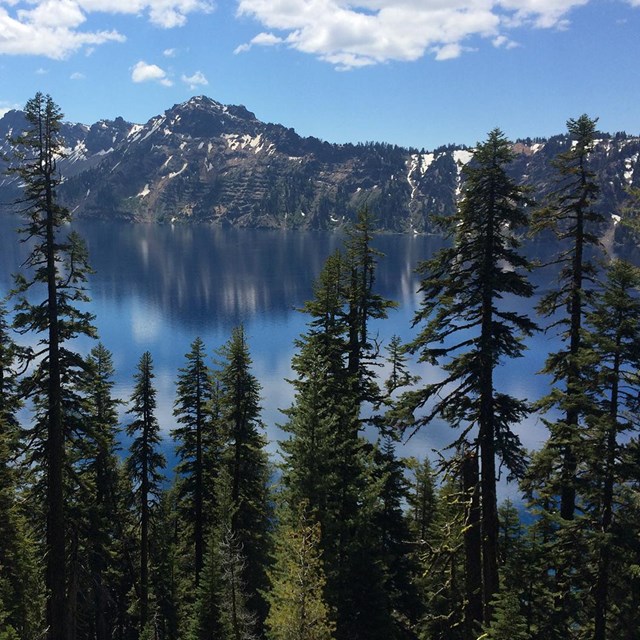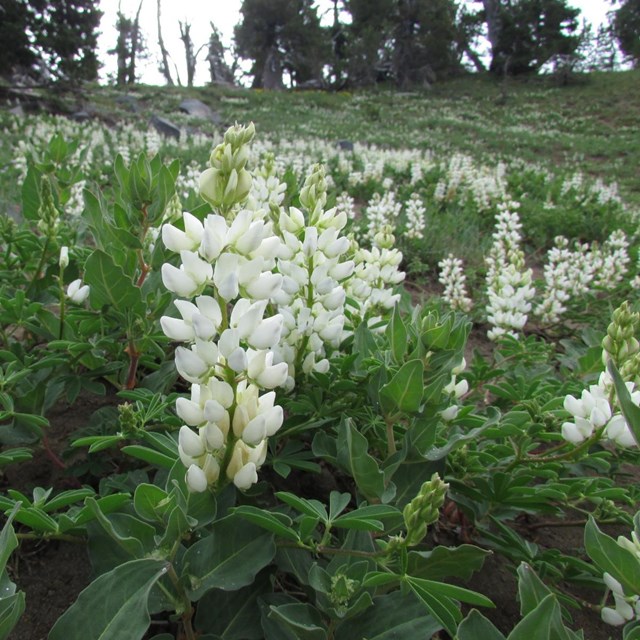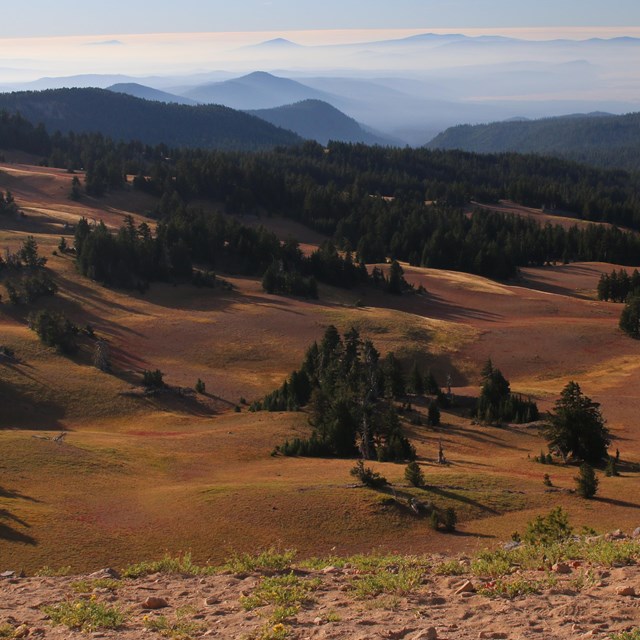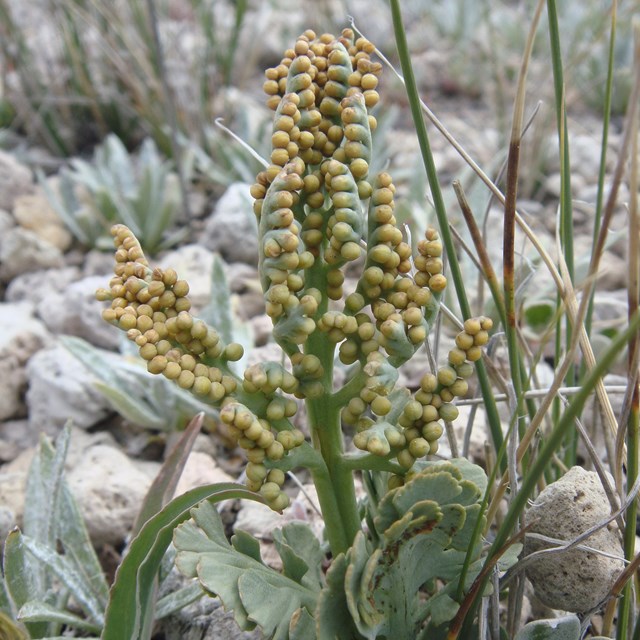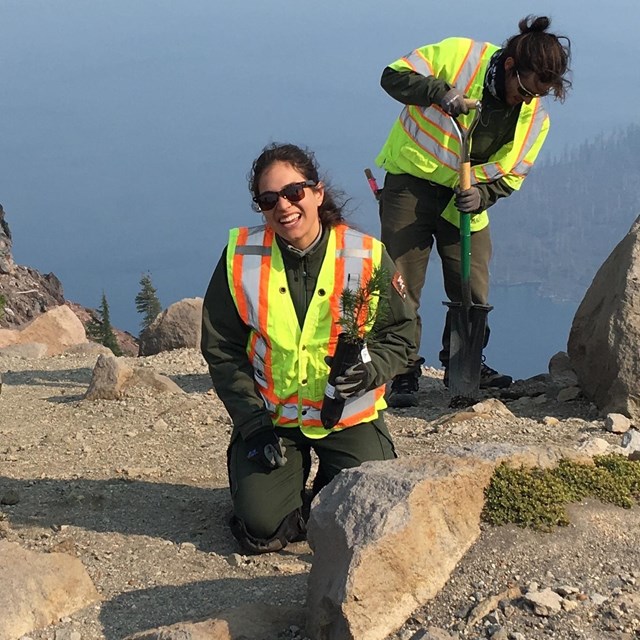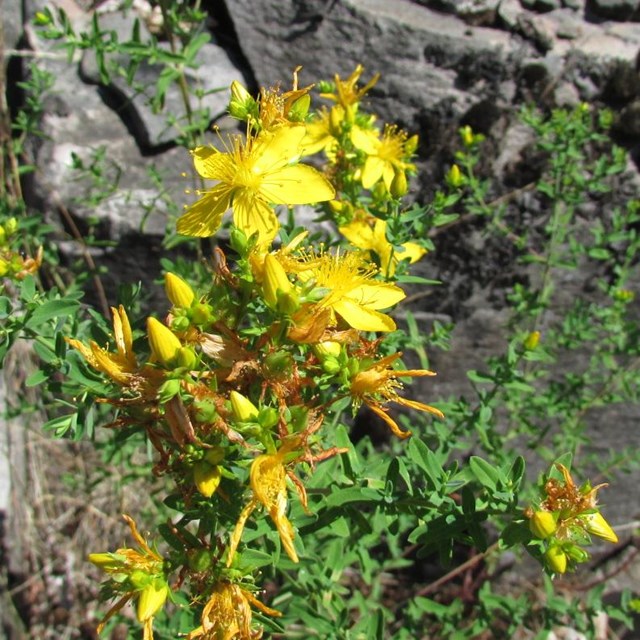
Surrounding the picturesque, deep-blue Crater Lake are over 180,000 acres of forests, meadows, wetlands, and pumice fields. Together these create the canvas of Crater Lake National Park which rises from 3,990 feet in elevation to 8,926. The park supports more than 700 species of native plants that thrive, in spite of a short growing season and the challenge to survive in soils derived from porous pumice and volcanic ash. Get a list of vascular plant species below. Wildflowers are delicate splashes of color in the highest elevations but in lower elevations they grow profusely along rivers, creeks, and hillsides. The tallest trees are found along and up from the park boundary while the oldest trees hug the caldera rim. Rare plant species of conservation concern are protected throughout this diverse canvas. The introduction and spread of invasive plant species is an ongoing threat to the Park’s biodiversity. Through re-vegetation and management of invasive species, park botanists are restoring disturbed areas back to their natural condition.
Identifying and ListingThe vascular plant checklist available below is a good place to begin exploring and identifying the 700 native plant species known throughout the park. This NPS checklist utilizes the nationwide USDA Plants Database. Crater Lake botanists use Oregon Flora as their source for taxonomy, which includes species specific to the park and state. Select a Park:Select a Species Category (optional):
Search results will be displayed here.
|
Last updated: May 9, 2022

